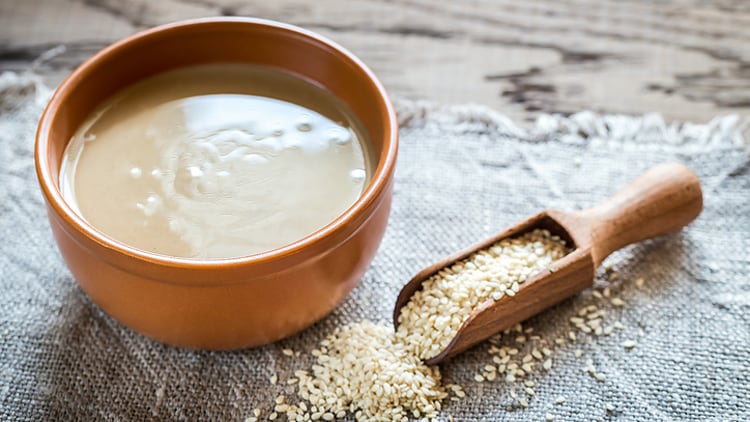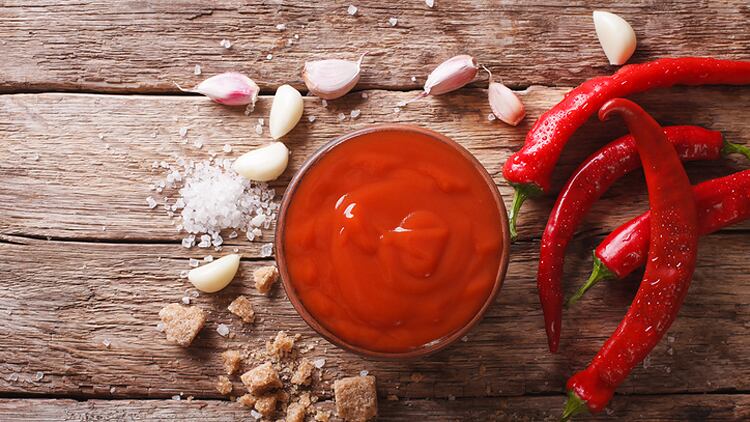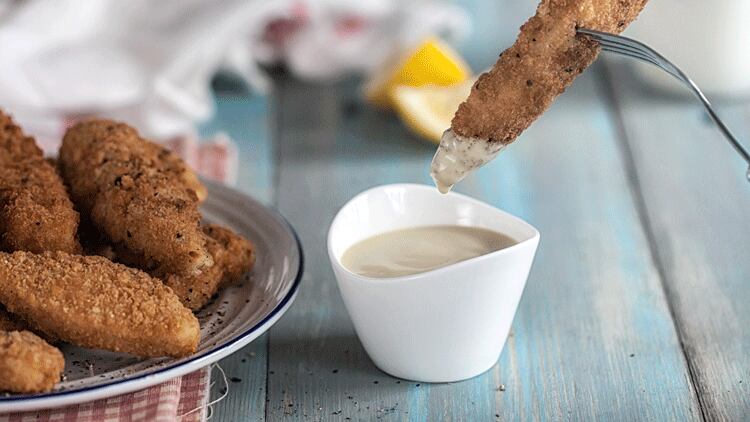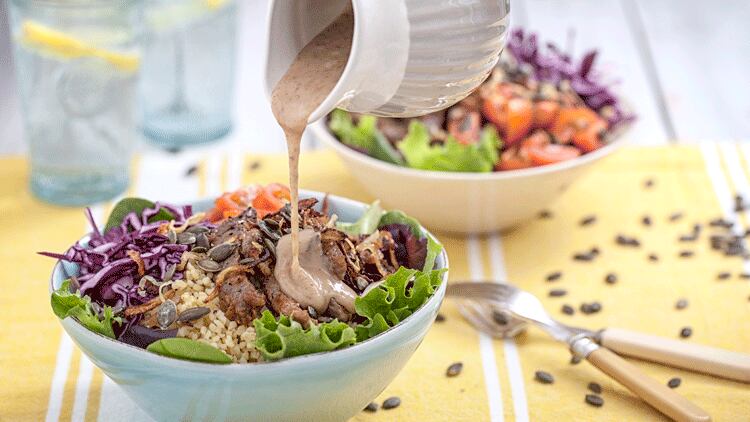According to data from MCA Insight, South East Asian, Japanese and South and Central American restaurants are outpacing more established cuisines such as French, Italian and Spanish in expansion terms.
This success has not gone unnoticed by larger, more mainstream players. Bakery giant Gregg’s sells a Katsu Chicken Bake inspired by Japanese-Indian hybrid katsu curry; pub chain Wetherspoon serves Shanghai-style noodles; and Burger King recently launched a hamburger enlivened with sriracha, a pungent chilli, garlic and vinegar-based sauce that takes its name from the Thai city of Si Racha.
This trend is also backed up by consumer research carried out on behalf of Mizkan, the Japanese company behind some of the world‘s best known sauce and condiment brands including Branston pickle and Sarson’s vinegar. Data from its first annual Sauces Survey reveals that today’s consumer is more adventurous than ever before.
“We interviewed 1,000 consumers and found that 77% of them would be willing to try a new condiment in a foodservice environment - rising to four in five for over 30s,” says a Mizkan spokesperson. “As a result, our development kitchen is working on flavour trends of the future, which includes far eastern flavours such as wasabi, sriracha, sesame and kimchi.”
Middle Eastern promise
Kebabs and hummus may be a mainstay of the British food scene, but the rest of the Middle East’s varied culinary output was virtually unknown on these shores until just a few years ago. Branded Middle Eastern concepts including Comptoir Libanais and Yalla Yalla have educated the masses on the delights of this underrated and exotic cuisine, as have a host of high profile independents.
Great British Menu winner Selin Kiazim’s Turkish restaurant Oklava has found favour with critics and foodies alike, while other Middle Eastern restaurants such as Strut & Cluck, Arabica Bar & Kitchen and Berger & Q have created modern, casual restaurant formats that look likely to rollout.
“The British market was looking for something exciting,” says Strut & Cluck head chef and co-owner Limor Chen. “I take my hat off to Yotam Ottolenghi, he brought this kind of cooking to the fore and it’s been on the rise ever since.”

A single dish at Strut & Cluck features harissa, tahini, and zhoug: a mix of North Africa, the Levant and Yemen respectively. Harissa is made primarily from roasted red peppers and spices and has filtered through to the mainstream in recent years. Gourmet Burger Kitchen even mixes it into its mayonnaise.
Tahini is another sauce that has transitioned to non-Middle Eastern eateries, a creamy sauce made from blended sesame seeds that’s often perked up with garlic and lemon juice to make a simple dressing (try it with roasted cauliflower).
Zhoug may be hot on its heels, an intense green spice paste that involves coriander, cloves and a little green chilli. “It gives the deep intense flavours Britain has come to love, without the spice,” adds Chen, who will open a sister restaurant to Strut & Cluck early next year.
Venturing even further east
South East Asian food is booming. The charge is being led by a new breed of forward-thinking Thai restaurant, but operators are also exploring Vietnamese, Malaysian and Filipino cuisine. Restaurant brands in the space to watch include Thai chains Giggling Squid, Rosa’s Thai and Koh Thai Tapas, and Vietnamese chain Pho, which is named after the famous Vietnamese soup dish.
The latter takes advantage of how healthy most Vietnamese food is to create a menu that appeals to those looking to eat fresher, lighter food. As every operator knows, consumers are far more health conscious than ever before. However, according to Mizkan, only 32% of those surveyed cite availability of low sugar and salt in sauces as important when dining out in a hospitality environment. This highlights to operators that the emphasis on ‘healthiness’ should be focused on the menu item itself, and not in fact the condiment.
The big star of the Southeast Asian condiment scene is the aforementioned sriracha. A few years ago, you would be lucky to find this bracing sauce at a dedicated ethnic food store. But sriracha sauce is now showing up everywhere, from pizza parlours to fried chicken joints. Pizza delivery giant Domino’s even ran a 2016 campaign to announce the sauce’s arrival on its menu.

But what’s next for South East Asian food? The last two years has seen an explosion of restaurants that are exploring more authentic Thai cuisine. London restaurants Som Saa, Kiln and Smoking Goat’s are swapping sweet and creamy Thai green curries for spicier food that’s often from the less known north of the country.
Ingredients and preparations to watch include tamarind-based sauces of the sort often served with chargrilled dishes; sauces and condiments that mimic, the sharp, pungent and spicy flavours associated with papaya salad (som tam); and nahm prik, an intensely fiery dip that involves chillies, garlics, shallots, lime juice and some kind of fish sauce or shrimp paste.
Big in Japan
Japanese food has had a solid footing in the UK for a decade or so thanks to big brands including Wagamama, YO!Sushi and Wasabi. However, the cuisine is enjoying something of a renaissance as operators look to explore new flavours and up authenticity. Ramen exploded five years ago and grilled Japanese-style dishes are now hugely popular thanks to the likes of Zuma and Roka, which cook many of their ingredients on charcoal-fuelled robata grills.
The popularity of these restaurants has seen their ingredients and techniques start to filter down to restaurants that don’t specialise in Japanese cuisine. Seafood specialist Wright Brothers is a pioneer in this area, pairing its fresh fish and shellfish with increasingly adventurous flavourings including ponzu and wasabi. As well as being delicious, much of the Japanese cooking cannon is well-suited to healthier eating.
“Eating out isn’t a treat anymore and people want healthier options, so we’re cutting butter out of our sauces,” says Richard Kirkwood, the five-strong group’s head chef. “Japanese and other Asian cuisines are helping us to do that.”
A Japanese restaurant to watch is Nanban, which has developed a cult following. Chef-proprietor Tim Anderson takes inspiration from his culturally-eclectic Brixton locale to create a menu of Japanese ‘soul food’. There’s even a take on the Italian classic spaghetti carbonara. Key flavourings at the restaurant include miso, wasabi, sansho pepper and ponzu sauce.

Korea progress
Japan’s neighbour, Korea has perhaps shaken up the condiment and sauce scene in the UK more than any other country despite having a comparatively tiny restaurant footprint on these shores. Its two key preparations are both fermented. First up is kimchi, a spicy vegetable side dish usually made with cabbage. Extremely healthy and packed with flavour, the dish has been incorporated into pretty much everything, but it’s especially popular as a partner to burgers, chicken wings and other US comfort food staples. It can also be puréed and used as a condiment, either as is or mixed into mayonnaise.

Then there’s gochujang, a savoury, sweet and spicy sauce made with chillies that is also a firm favourite with chefs looking to spice up US-inspired menus. Korean fried chicken, anyone?
Consumer awareness of exotic sauces is increasing. Four in five of those surveyed are familiar with at least one niche sauce, including wasabi (54%), teriyaki (53%) and sriracha (19%). But that’s not to say that unfamiliarity would deter consumers from trying a sauce. Mizkan says that when provided with a description, consumers are definitely willing to experiment with certain dishes.
For instance, although honteri - a sweet, mirin-based Japanese seasoning - scored the lowest on awareness (6%), 97% agreed they’d be likely to try it with a meal, rising to 100% of 16-44 year-olds. Similarly, only 7% of consumers are familiar with ponzu sauce, yet 94% would be willing to try it.
Mizkan’s says that operators need to know the dishes that consumers feel most comfortable experimenting with, in terms of flavour pairings. Its survey revealed that consumers were most likely to try more niche sauces with grilled chicken (five out of the 11 sauces listed). In particular, 55% of consumers deemed themselves willing to try sriracha with grilled chicken, compared to 41% with steak. In addition, 47% would try honteri sauce with grilled chicken but only 43% with grilled salmon.

But don’t lose sight of the classics
While punters have never been more adventurous, it’s still important to innovate around more traditional flavours and cuisines.
“Don’t put all your eggs in one basket,” says a Mizkan spokesperson. “Our survey revealed that it would be unwise for operators to place too much focus on flavours of the moment, at the detriment of more traditional or classic sauces, with more than two in three consumers’ surveyed still preferring classic sauces, such as tomato, BBQ and brown sauce, over more contemporary equivalents.”
This BigHospitality feature was sponsored by Mizkan.
Mizkan was founded in 1804 and has been producing authentic Japanese sushi seasonings and vinegars for over 200 years. Today, the business is the largest supplier of sushi seasoning globally and the only UK manufactured Japanese Sushi Seasoning vinegar supplier to the hospitality and foodservice sectors in the UK. Mizkan is the company behind such quality, iconic British brands such as Branston pickle and Sarson’s vinegar.
